Blog Post written by Luisa Meiritz and Phyllis Mono. About the International Fossil Coral and Reef Society symposium;
Every four years, the International Fossil Coral and Reef Society (IFCRS) organizes an international symposium focusing on research in fossil corals, sponges, reefs and reef communities. This symposium is held in a different country each round. In 2023, it was hosted in Poland from the 9th to the 15th of September with the motto of “Going deeper”. In seven different scientific sessions, ~50 researchers from over 12 countries presented their current research on coral and reef evolution throughout earth’s history, promoting the discussion of new frontiers in coral geochemistry, taxonomy, paleobiology and paleodiversity. Among these attendees were three members of the DFG Priority Programme “Tropical Climate Variability & Coral Reefs” (SPP 2299), Thomas Brachert (Leipzig University), and Phyllis Mono (Leipzig University) from the EOCENE project, and Luisa Meiritz (GEOMAR Kiel) from the EPiBleach project, who presented on their work in this area.
This was the 14th IFCRS symposium and it was held in the European Centre for Geological Education (ECEG) which is based in Chęciny, a small town in Poland. The venue of this symposium is most interesting for geologists as it is located in the Holy Cross Mountains, a region with peculiar geological features. This location allowed for several field trips during the conference to different outcrops, quarries and other geological highlights from the Palaeozoic (541-252 million years ago) and Mesozoic (252 – 66 million years ago) eras.
The conference was organized by the Institute of Paleobiology, Polish Academy of Sciences with the help of the University of Warsaw (Faculty of Geology) the Jagiellonian University in Kraków (Faculty of Geography and Geology) and Adam Mickiewicz University in Poznań (Faculty of Geographical and Geological Sciences). Our special thanks to the members of the Scientific and Organizing Committee of the 14th Symposium of the International Society of Fossil Corals and Reefs for giving us a great scientific and cultural experience!

Phyllis and Luisa attended the 14th Symposium of the International Fossil Coral and Reef Society
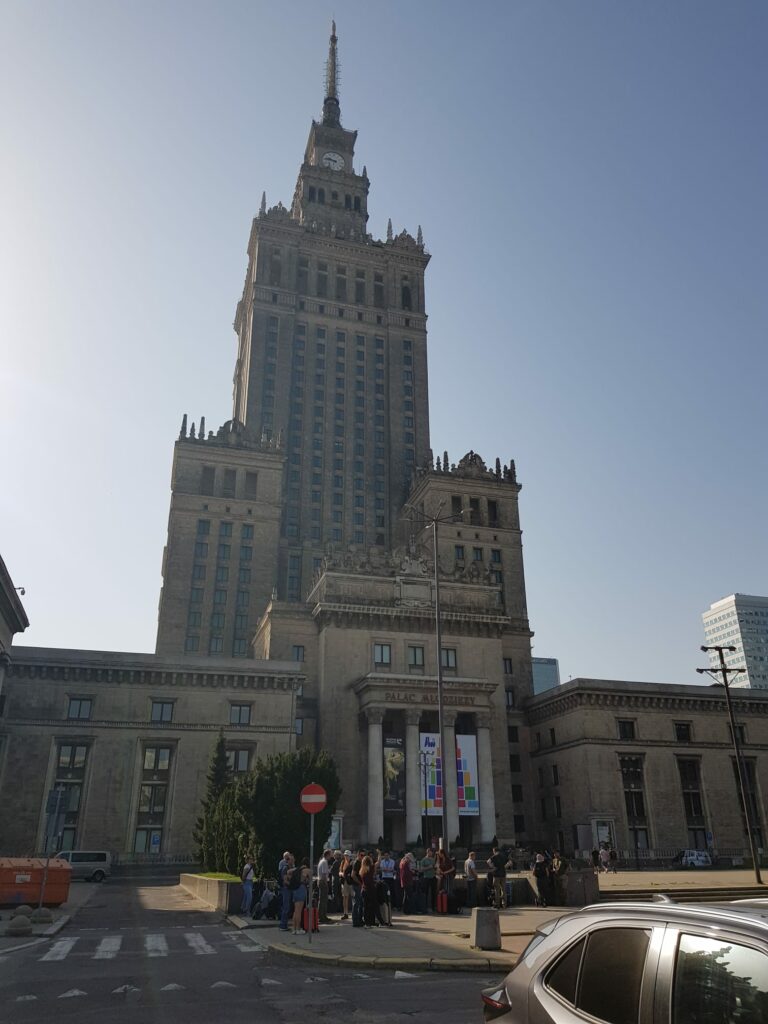
Conference participants in front of the Museum of Evolution in Warsaw
So what happens at a unique conference like this?
The first two days of the conference consisted of travelling to the conference venue (ECEG, Chęciny) with different stops along the way. We arrived in Warsaw on the 9th September to attend the Icebreaker event in the Museum of Evolution of the Institute of Palaeobiology (Polish Academy of Science) to register for the conference, to meet and chat with the conference participants and to get an idea of what we might see in the coming days.
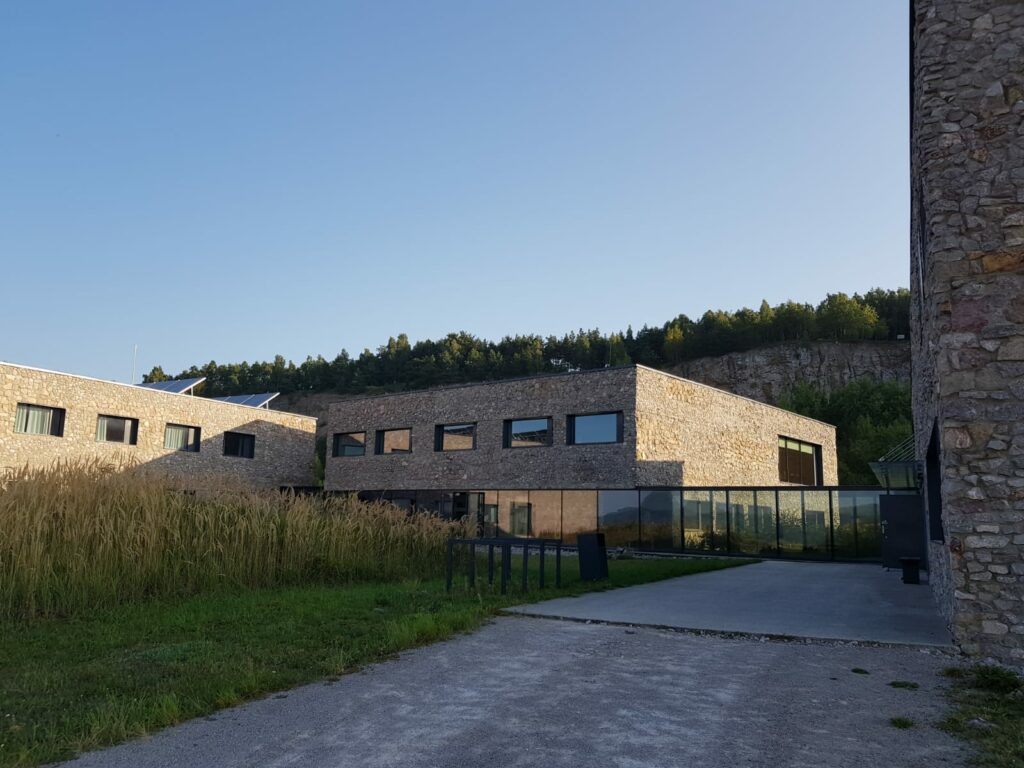
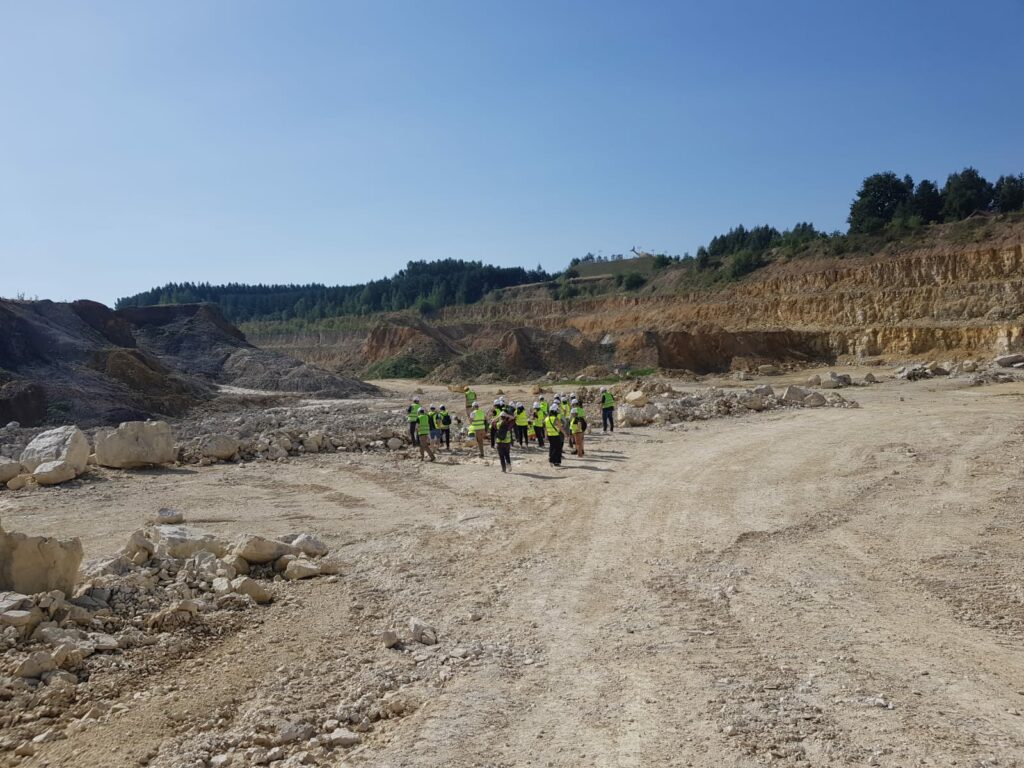
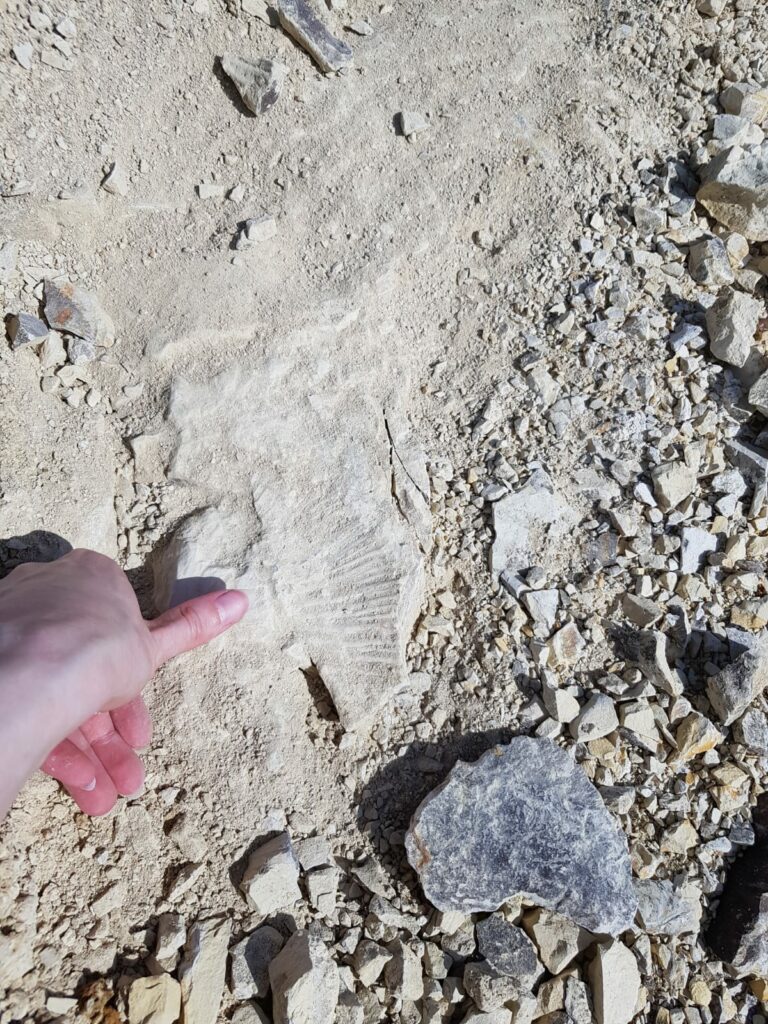
The conference was held at the European Centre for Geological Education, Chęciny (pictured on the left). Fossil hunt in the Owadòw-Brzezinki Quarry! (see in the middle image). We found the cast of an ammonite (right image).
At 10 o’ clock on Sunday, 10th of September, the trip started off from Warsaw with all participants travelling to the location of the first of four field trips, heading to the Owadòw-Brzezinki Geopark and associated Quarry. Here we had the opportunity to observe a well preserved Late Jurassic (199.6 million to 145.5 million years ago) ecosystem and also tried our hand at searching for fossils. In the marly limestones of the quarry, our group managed to find brachiopods, ammonoids and even a fish (or maybe a mammal) bone.
In the afternoon we arrived at the location of our second conference field trip, at the Julianka Quarry to have a look at an ancient (Late Jurassic) cyanobacteria-sponge-bioherm. That afternoon we arrived at the impressive conference venue located in the heart of the Holy Cross Mountain in Chęciny.
The conference was heralded with the ringing of the traditional IFCRS bell and the plenary presentations of the first scientific session on “Corals and Climate Change” on Monday 11th of September, a topic of particular interest to us. After a day of talks we headed off on our third field trip of the program to the Wietrznia nature reserve to attend a lecture about the geological history of the Holy Cross Mountains. This was an excellent way to learn about the fascinating geological context of the symposium!


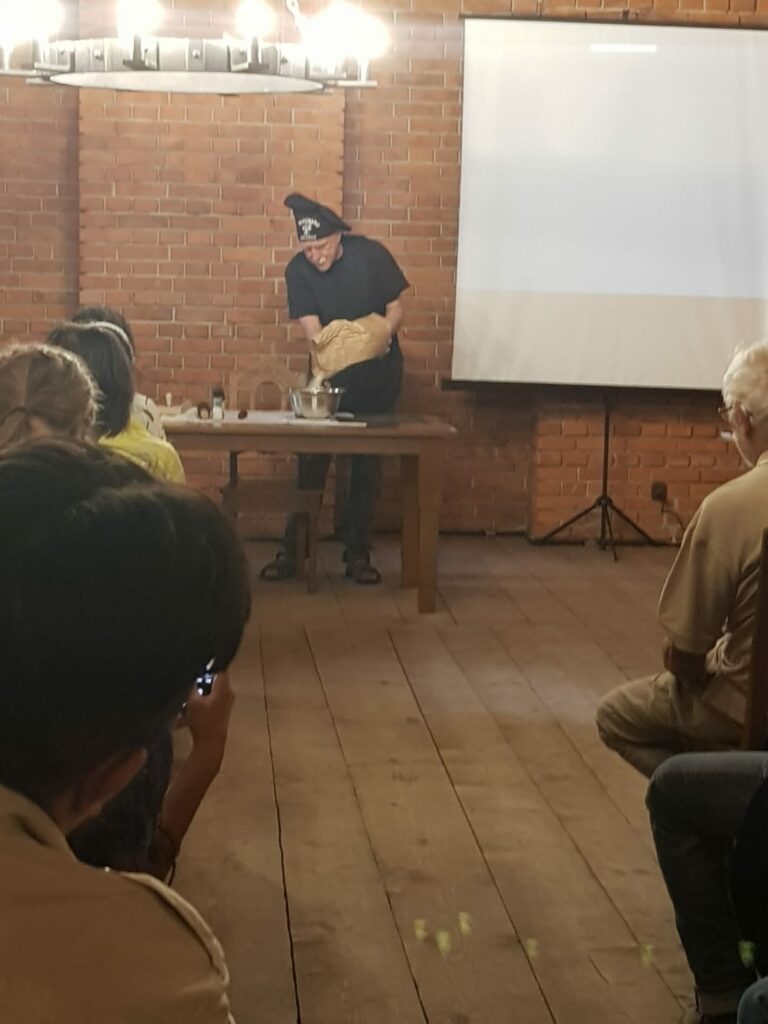
Jarosław Stolarski (University of Warsaw) rings the conference bell to announce the beginning (and later the end) of the conference. Later he taught us how to correctly produce Pierogi (with scientific evidence!)
The next two days were filled with plenty of plenary talks and poster presentations of various scientific sessions with topical focus on “Coral biomineralization and skeletal proxies”, “Challenges of coral phylogeny and taxonomy”, “Coral paleobiology, functional morphology and photosymbiosis”, “Fossil coral reefs: research methods”, “Reefs in space and time” and “Coral paleodiversity patterns”.
We, the SPP 2299 members, presented in the second scientific session: Coral biomineralization and skeletal proxies. Thomas investigated heat stress in Late Miocene tropical reef corals, Luisa presented new advances regarding the reconstruction of climate variability with special emphasis on coral bleaching from her SPP 2299 project EPiBleach, and Phyllis introduced a first record of the calcification performance of fossil subtropical reef corals from the Eocene greenhouse period 40 Ma ago from her SPP 2299 project EOCENE. If you want to find out more about our talks, you can follow up with our abstracts in the official booklet of abstracts of the IFCRS website.
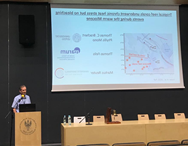
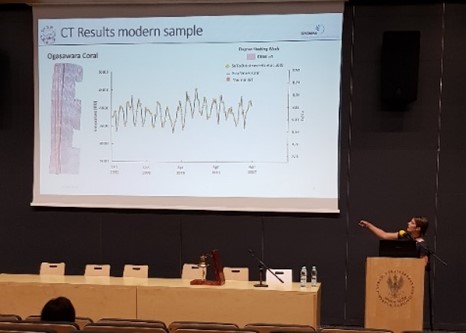
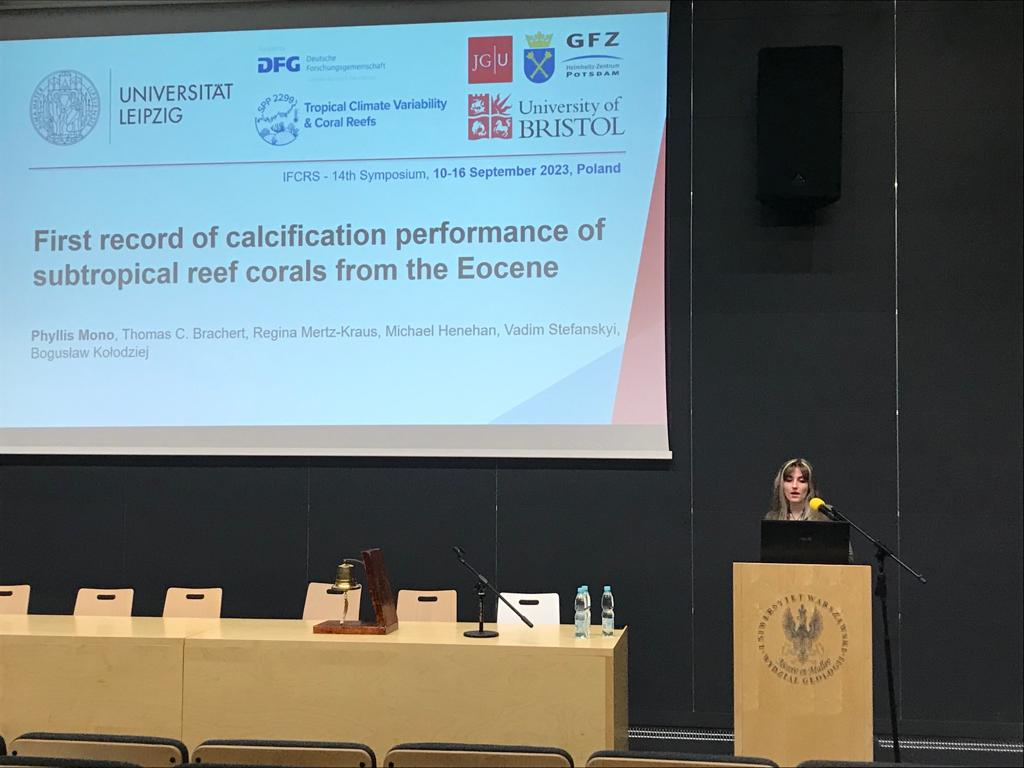
Thomas, Luisa, and Phyllis presenting new advances in their current research projects.
The scientific programme concluded on Wednesday evening (13th September), with a lovely guided tour of the neighboring castle and the town of Chęciny.
Despite the end of the official scientific program, the field trips didn’t end there. Thursday (14th September) was filled with excursions across the Kielce region in Poland. The day consisted of an assessment of Devonian (419.2 – 358.9 million years ago) mesophotic environments of the Holy Cross Mountains and a fossil hunt in the Skała and Ostrówka Quarries, followed by a visit to the Ethnographic Park in Tokarnia. There we had one of the most delicious workshops of the entire program, an adorable workshop on how to correctly prepare and fold Pierogi!
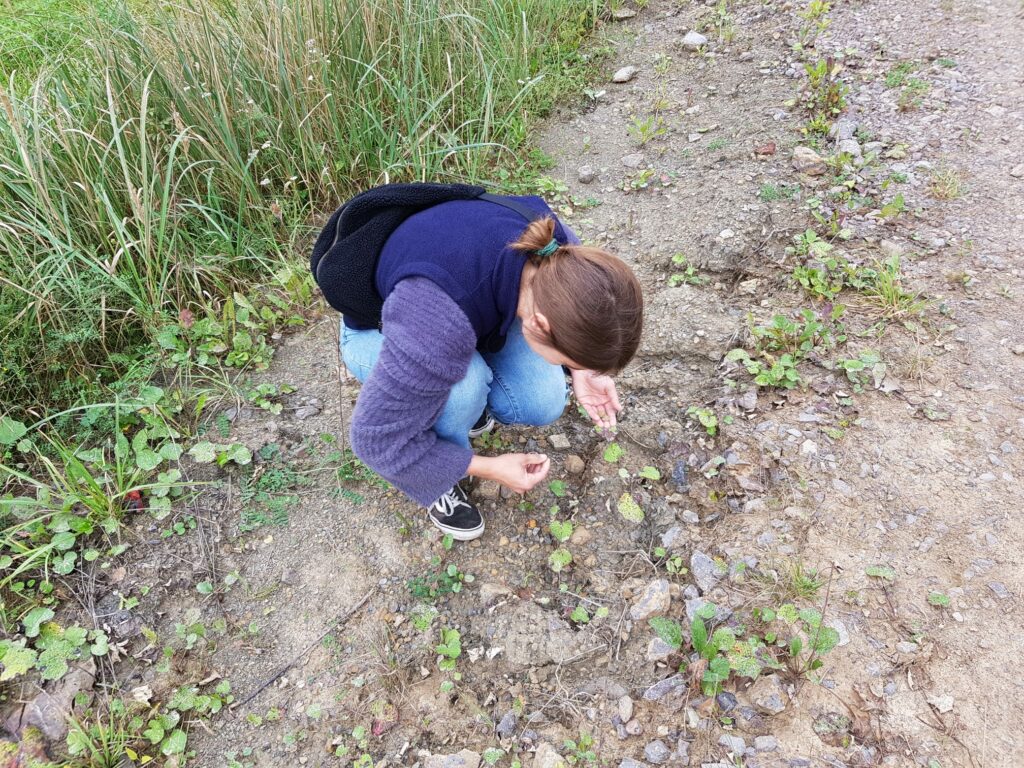
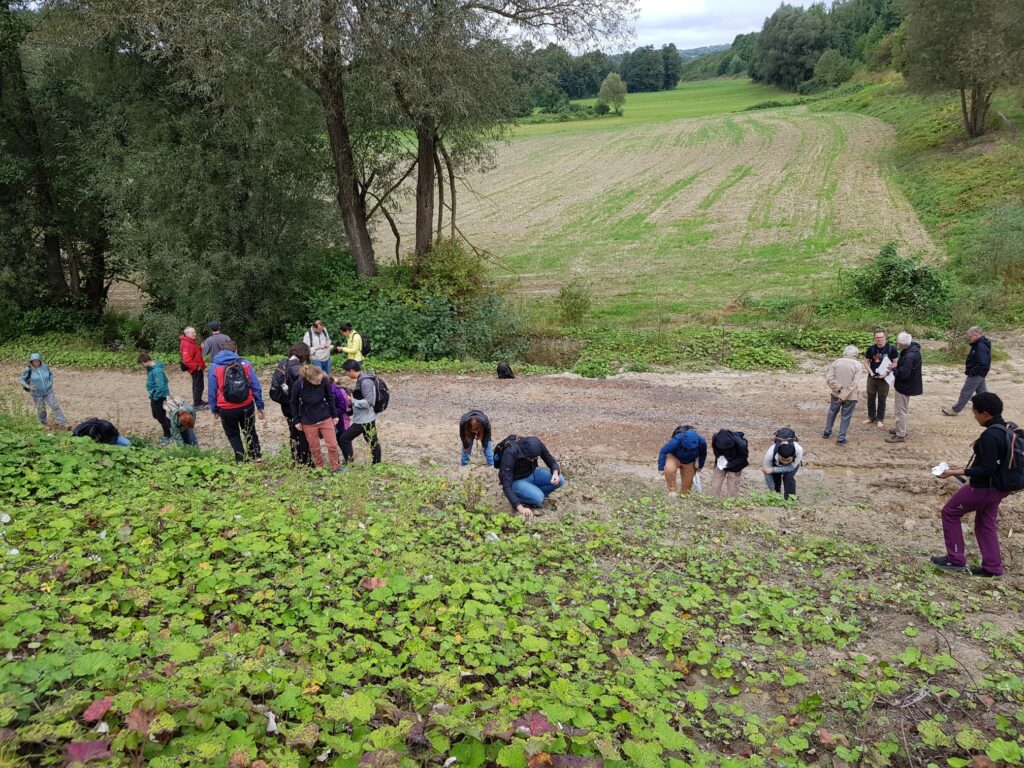
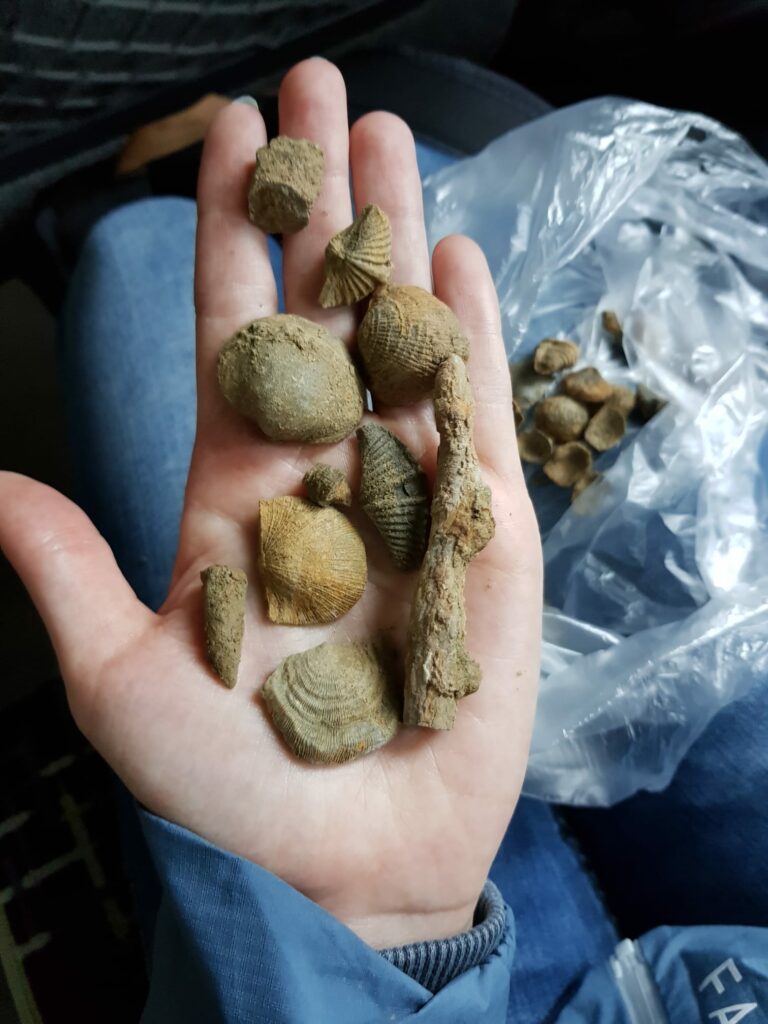
Fossil hunt near Skała Quarry in the Devonian of the Holy Cross Mountains. Fossils found: brachiopods, corals and echinoderms.
The day was closed with the General Assembly in which a new conference committee was elected and the host location of the next IFCRS symposium, Toulouse, France was revealed.
On Friday 15th September we transferred to Krakow city for a visit of the Wieliczka Salt Mine and finished the conference off with a farewell dinner there.
The special mixture of scientific program and excursions, which not only presented Poland from a geological point of view, but also gave insights into Polish culture, history, traditions and cuisine, made this symposium a once in a lifetime experience for us. As it was a rather small conference with only about 50 participants, we had the opportunity to get to know all early career and senior researchers over the course of the week and discuss our individual projects and ideas. We are really grateful for the experience and all the great ideas we have gained from our time exploring the geological history of this polish area and can’t wait for the 15th symposium in Toulouse (with French geology, interesting fossils and bread and cheese of course).
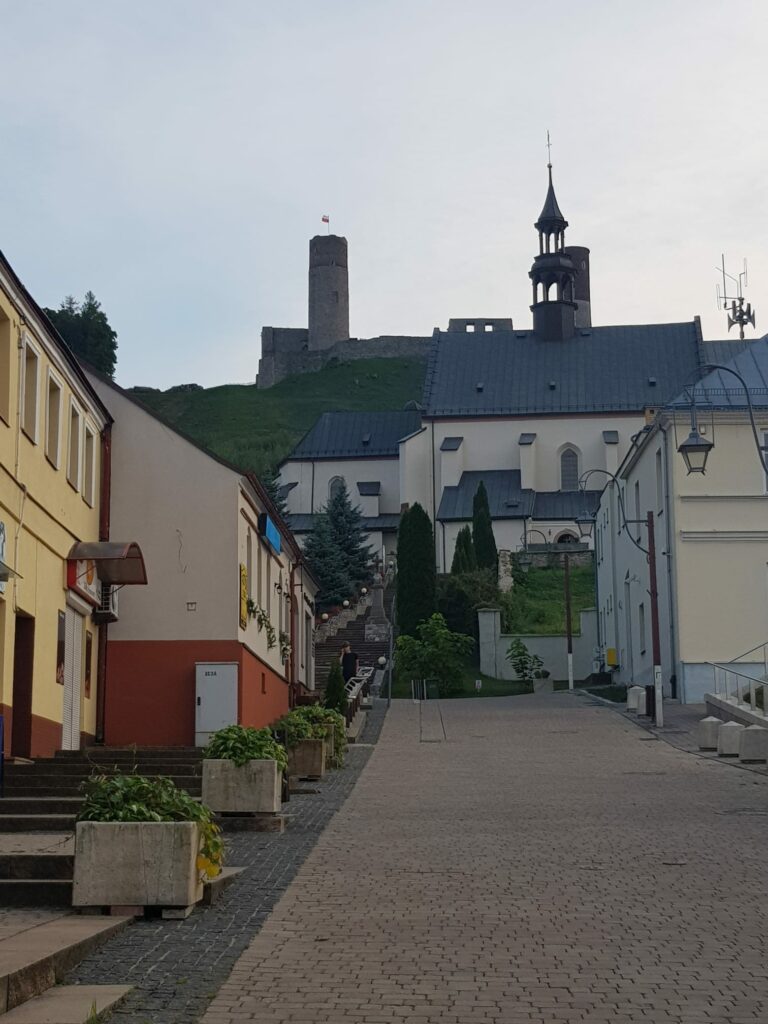
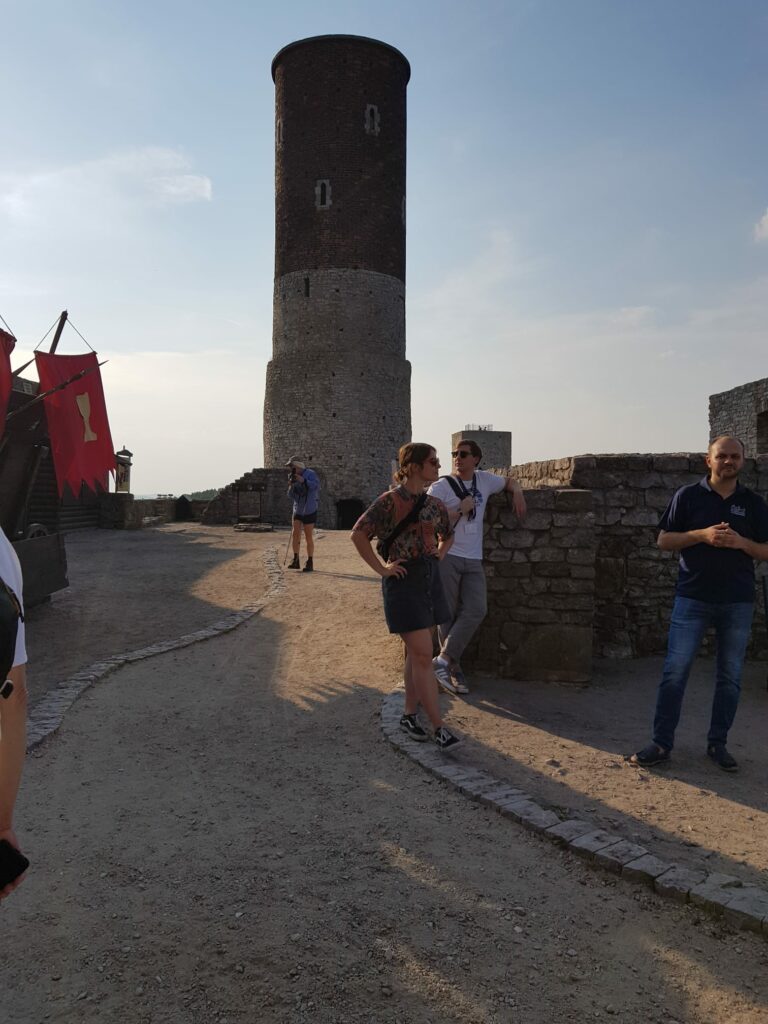
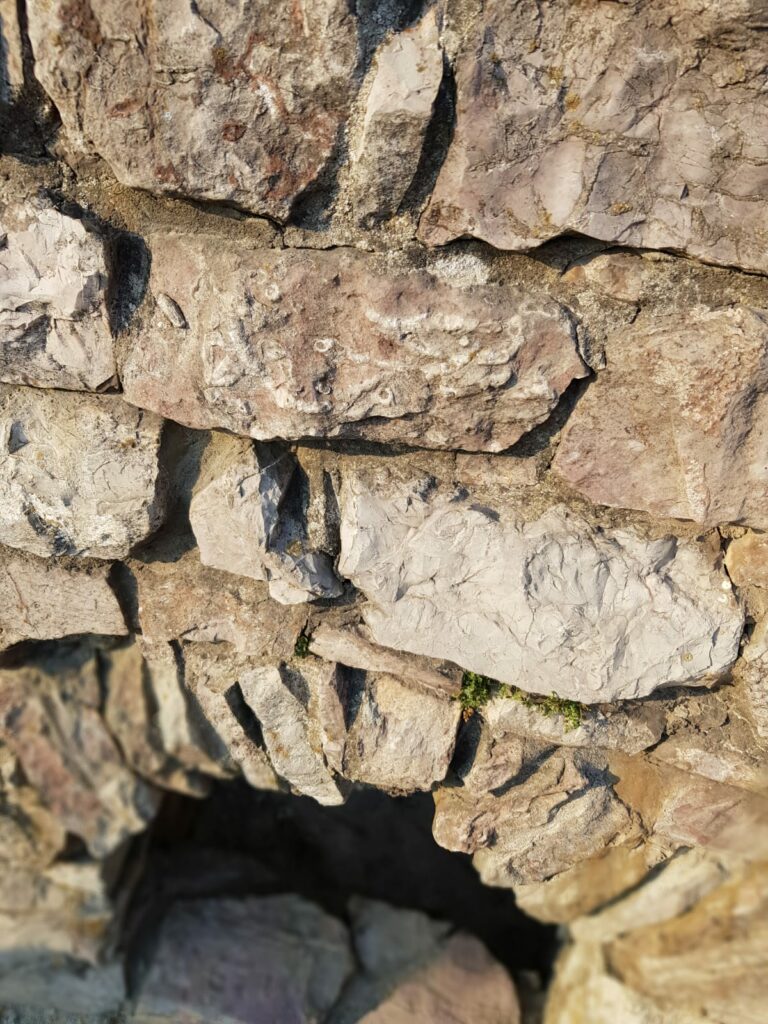
Chęciny town (left), Chęciny castle (center) and fossil corals found in the in the walls of Chęciny castle (right)
Photo Credit: All pictures except the group picture were taken by Phyllis Mono, Luisa Meiritz or Thomas Brachert. The group picture was taken by an employee of the Wieliczka Salt Mine with an unknown mobile phone.
Blog edited by Jessica A. Hargreaves.
